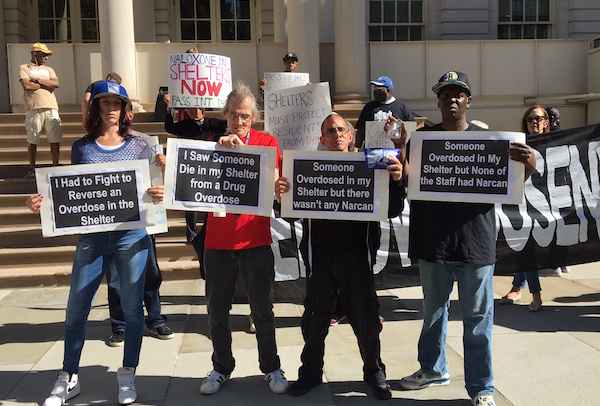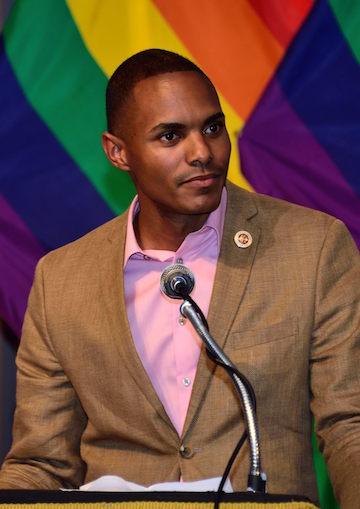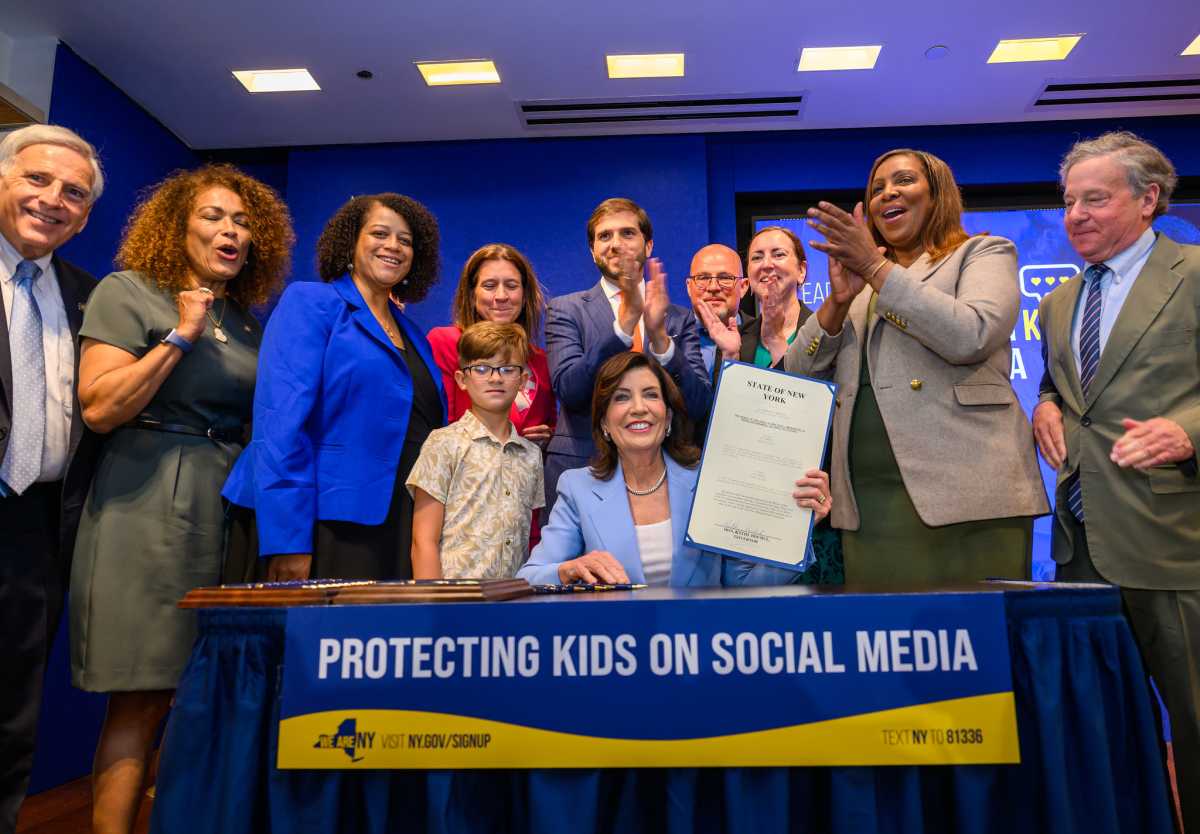
BY NATHAN RILEY | Advocates for the homeless are pressing the City Council to mandate that shelter staff from the Department of Homeless Services (DHS) as well as their clients have ready access to medicine that reverses overdose poisonings, allowing the victim to breathe unassisted almost immediately.
Nobody disputes the need for making Narcan available at the shelters. Overdoses are the leading cause of deaths among the homeless. Minimal training is required; Narcan can be administered by a person after a single training session. Also known as Naloxone, it is sprayed into the nose and, in most cases, after one or two squirts normal breathing is restored.
Narcan use in city shelter facilities is up, according to records supplied by DHS.
“We support the HealingNYC goal” of “increasing Naloxone training,” said Isaac McGinn, the department’s spokesperson, referring to the city’s multi-agency effort at preventing opioid deaths .
Despite such assurances, Vocal-NY, the Legal Aid Society’s Homeless Rights Project, and the Coalition for the Homeless are pushing for legislation to make this training mandatory for the staff at shelters and to require that their homeless residents be taught how to administer Narcan.
These advocates are angry because in their view the city is not making public health its priority in the battle again opioids. The NYPD receives the lion’s share of the new funding, with additional detectives hired and every overdose investigated as a potential homicide. For groups representing the homeless and others who use drugs, an approach based on actions after a person has died is callous. Users are at risk from overdosing, but it need not be fatal. Narcan will save their lives, and a public health approach based on prevention must be prioritized, advocates say.
The HealingNYC initiative was announced in March, and it calls for homeless shelters to make Narcan available. Public health experts see it as an indispensible tool in bringing down a death toll that reached a new record last year. In 2016, there were 1,374 overdose deaths in all settings citywide, a 46 percent increase over the previous year.
The bill advocates are pressing for was introduced on Jan. 17 by Bronx Councilmember Ritchie Torres, and its 22 co-sponsors include Upper West Side Councilmember Helen Rosenthal, East Councilmember Ben Kallos, and Health Committee Chair Corey Johnson from Chelsea. Despite the wide co-sponsorship, the measure has languished and was a bit player at an April 20 Council hearing.
Angered by the delay, advocates and residents from homeless shelters held a news conference on the steps of City Hall on Sept. 27 blasting both the Council and DHS.
“What have you been doing for nine months?” demanded Kassandra Frederique, the New York State director of the Drug Policy Alliance.
Joshua Goldfein of the Legal Aid Society’s Homeless Rights Project summed up the groups’ frustrations by saying there is “not a medical reason, not a legal reason, not a policy reason” to oppose Torres’ legislation.
Their complaints are being heard.

Torres’ office said negotiations are proceeding with DHS about the legislation’s fine points, and he expects a bill will pass this month. McGinn, speaking for DHS, confirmed that agency officials “are collaborating closely” with the Council.
At last week’s press conference, shelter residents claimed that staff there are slow to respond to overdose incidents and prevent residents from using their own kits to reverse overdose crises.
Whatever may have happened in the past, DHS says it has adopted new procedures and has now trained all staff members. Shelter residents at City Hall last week, however, voiced skepticism about those claims.
With overdose deaths mounting across the city, DHS recently filled a long-time vacancy by hiring a medical director, Dr. Fabienne Laraque, a public health specialist with a background in HIV and hepatitis C prevention who formerly worked at the city health department. Laraque has taken the lead in training DHS police and staff in the use of Narcan, tapping medical school students from NYU late last year in “a massive effort” to get all agency staff up to speed on overdose prevention.
OD reversals are increasing at DHS shelters, with the agency boasting that it intervened successfully on more occasions in the first eight months of this year than in all of 2016 — 99 versus 97.
Each use of Narcan is reviewed the DHS medical staff, which can offer suggestions for follow-up. The agency may recommend, for example, that a homeless person who has called an ambulance for an overdosing partner be trained in the use of Narcan to enable immediate help if another incident arises.
The city health department’s goal is to have drug users, their friends, and families all have Narcan readily accessible. In addition to homeless shelters, needle exchange programs, the Harm Reduction Coalition, and Vocal-NY offer training in properly administering the medication.
According to health department statistics, overdose deaths among homeless New Yorkers rose 13 percent in 2016 over the previous year to 239, though most of those deaths occurred outside the shelter system. The city medical examiner has found that many of the deaths that occurred in shelters were due to multiple causes, such as a heart attack occurring along with an overdose.
DHS voiced confidence this week that its new procedures can reverse more than 90 percent of ODs among shelter residents. Those residents who joined advocates at City Hall last week, however, remain convinced that deaths are higher than acknowledged and that legislation is needed to make certain that Narcan is available when needed in every city shelter.


































